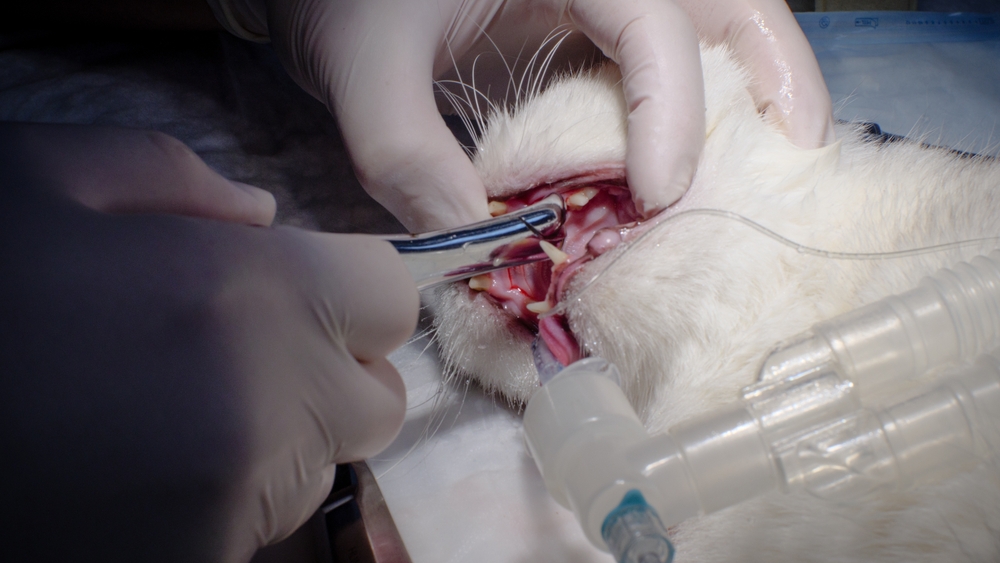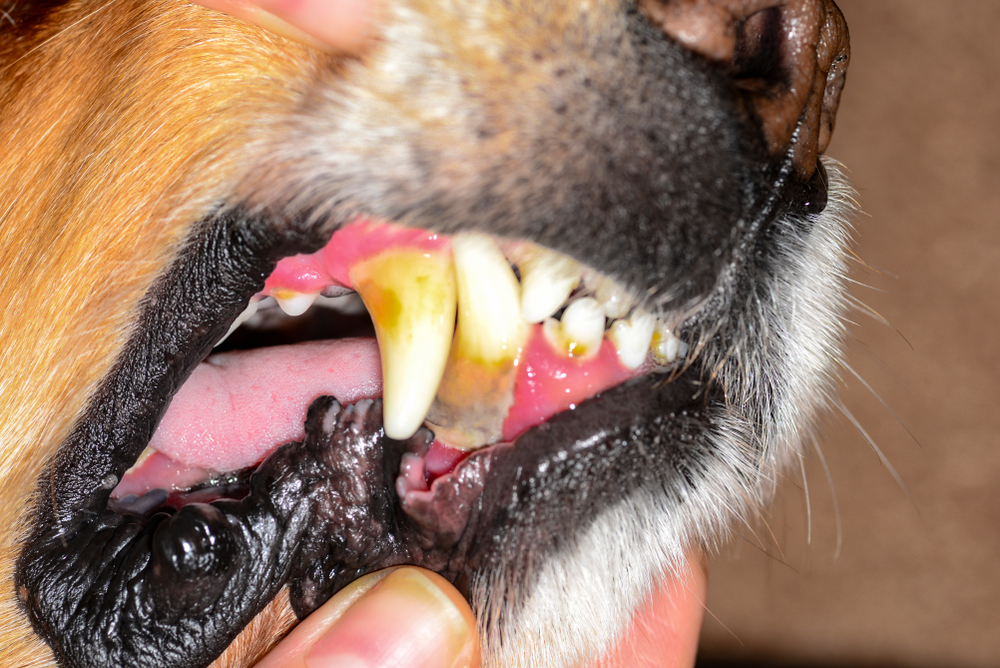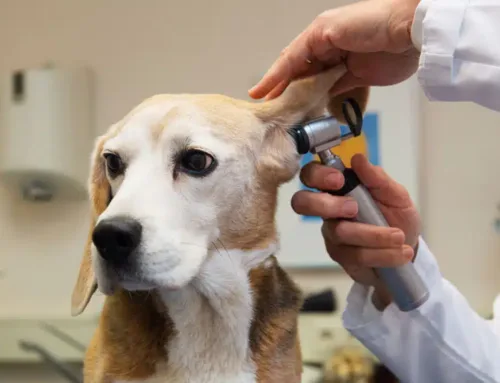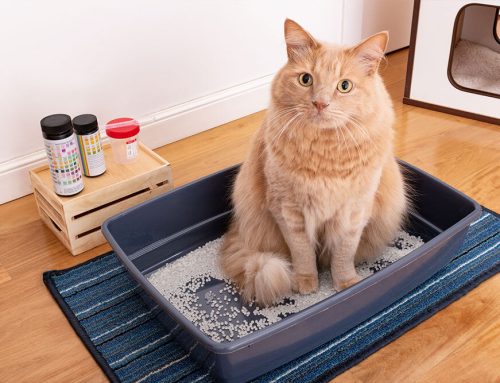Like people, pets need healthy teeth and gums to thrive. Unfortunately, periodontal disease, a progressive inflammation of the tissues surrounding the teeth, affects up to 80% to 90% of dogs and 85% of cats by age 3. Early periodontal disease is easy to overlook, and owners often fail to notice that their pet has a problem until the disease has progressed and the pet is in pain or stops eating. This can eventually lead to health complications throughout the body—not only in your pet’s mouth.
February is Pet Dental Health Month—the perfect time to brush up on your pet’s oral hygiene knowledge and learn how to prevent and treat problems before they escalate. At Fairfax Veterinary Clinic, we’re passionate about helping pets maintain their sparkling smiles, and we want to help pet owners learn the ins and outs of pet dental hygiene.
Periodontal disease in pets: Development
Periodontal disease can be difficult for pet owners to see, unless they are familiar with the signs. Watch for the following indications that your pet is developing problems:
- Bad breath — While the occasional whiff of “fish breath” is normal, persistent, foul-smelling breath (i.e., halitosis), which is generated when bacteria feast on food debris and inflamed gums, is a red flag. The bacteria buildup is called plaque.
- Discolored teeth — Brown or yellow buildup on your pet’s teeth is not the result of their morning coffee—it’s tartar, the hardened form of plaque.
- Bleeding gums — Healthy gums don’t bleed easily. Gums that are red, swollen, or bleed when touched indicate inflammation, a periodontal disease hallmark.
- Changes in eating habits — If your pet shies away from their food bowl, favors softer foods, drops kibble, or refuses to eat, they likely have some level of periodontal disease. Painful, inflamed gums or loose teeth make chewing uncomfortable and can lead to appetite changes.
- Excessive drooling — Drooling is normal after a playful fetch session, but excessive or “ropey” drool can signal dental pain or worse, such as an oral abscess.
- Loose or missing teeth— Wiggly teeth or noticeable gaps in your pet’s once-pearly whites are major indicators of advanced periodontal disease. Don’t wait until your pet’s teeth fall out—the earlier you intervene, the better.
- Facial swelling—In severe periodontal disease cases, the infection can spread to the jaw bone, causing noticeable swelling around the mouth or under the eyes.
If you notice any of these signs, don’t delay! Early diagnosis and treatment of periodontal disease can prevent not only pain and tooth loss, but also heart, kidney, and liver complications if the infection spreads throughout the body.
Periodontal disease in pets: Prevention
Remember, periodontal disease is much more than aesthetics and, left untreated, can lead to serious health complications, including:
- Heart disease — Bacteria from infected teeth can travel to the bloodstream, increasing the risk of heart valve problems and other cardiovascular issues.
- Kidney and liver disease — Similarly, bacterial spread can affect the kidneys and liver and lead to organ damage and impaired function.
- Weakened immune system — Chronic inflammation associated with periodontal disease weakens the immune system and leaves your pet more susceptible to other illnesses.
Fortunately, you can incorporate simple steps into your pet’s at-home routine and significantly reduce their risk of gum disease. Steps include:
- Regular toothbrushing — Aim to brush your pet’s teeth at least three times a week with pet-friendly toothpaste to combat plaque buildup. Start slowly, gradually introducing the routine. Never brush your pet’s teeth with human toothpaste, which is toxic to pets.
- Offering dental chews — Look for chews approved by the Veterinary Oral Health Council (VOHC), which indicates they are proven to effectively reduce plaque and tartar. Avoid rawhide and hard bones, which can break teeth.
- Determining the best diet — Dry kibble and some treats can help clean teeth and promote fresh breath. If your pet has serious dental problems, consult with your veterinarian about a diet specifically formulated for dental health and tartar buildup prevention.
- Scheduling regular professional dental checkups — Despite good at-home care, professional cleanings are essential for removing plaque and tartar buildup that brushing can’t reach. Most pets need annual veterinary checkups, which can be included in their annual wellness examinations.
Periodontal disease in pets: Prioritizing

At Fairfax Veterinary Clinic, we offer thorough dental examinations, safe and effective cleanings under anesthesia, and personalized dental care plans tailored to your pet’s specific needs. Our compassionate team ensures every patient experiences a stress-free, positive dental experience.
This February, celebrate Pet Dental Health Month by prioritizing your pet’s oral health. Schedule a dental checkup and give your furry friend the gift of a healthy, pain-free mouth and protect them from disease progression
Contact Fairfax Veterinary Clinic today, so together, we can keep your pet in the best possible health. We can’t wait to see their teeth sparkle.








Leave A Comment